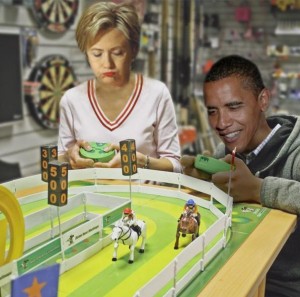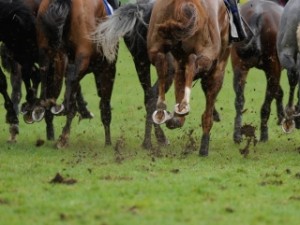The Value Of Ratings;
 When I first noted down the title of today’s post I instantly thought, how boring does that sound. I can assure you however that today’s post is far more interesting than its title. Hence the picture to spice things up somewhat. Apologies to all the lady readers who are now thinking the worst..!
When I first noted down the title of today’s post I instantly thought, how boring does that sound. I can assure you however that today’s post is far more interesting than its title. Hence the picture to spice things up somewhat. Apologies to all the lady readers who are now thinking the worst..!
However we rate a horse’s chances depends not only on our methodical selection process, racing system or finger pointing ability using the Racing Post Newspaper and a cuppa. Either way your interpretation of ratings and data needs some kind of rules in which to apply a logical approach to allow you to narrow down your potential selections faster and with more accurate conclusions. Today time issues are more precious than ever, you only seem to roll out of bed on a Monday morning and before you know it, you’re off to bed Sunday night.
“Having the correct tools at hand to speed up your decisions making is vital and it lies at the heart of any selection and preparation process”
Ratings offer us the opportunity to deciding which set of criteria is more important to our own particular form reading analysis or to today’s conditions.
For example if none of the horses in today’s field have Won or even Placed at today’s course, then it quite obvious that today’s course specialist maybe running elsewhere. In this case we can rule out the course contribution stats in relation to how it will effect today’s race outcome.
The Elements – Ground, Course, Distance & Class;
 These four elements are some of the most important in terms of where to start when qualifying any selection.
These four elements are some of the most important in terms of where to start when qualifying any selection.
Now before we get into race elements let me say this; horses may bolt home who have never Won or even Placed on any of the above elements, It does happen.
One way to hopefully avoid this is by making sure your betting in races with a decent amount of competition when laying and the opposite when backing, this may sound like common sense however you would be surprises how many people fall foul of the basics.
Usually you may find that this happens in Handicap races more than Non Handicap races. This is due to the fact that Handicap races are harder to predict than Non Handicaps.
“How can we possibly qualify a potential selection if we cannot see how it faired using past results over today’s elements”?
This is another reason why I insist on never laying horses that have only ever competed in a handful of runs, as it’s difficult to comfortably qualify any horse that has not performed over these elements. The horse in question may be the best in the field over today’s elements it just the fact that we have no evidence of this and the day you don’t want to find out is when you’re left holding the liability.
 There are a few old saying related to the horse racing world, the old cliché “horses for courses”, “if it doesn’t go on the ground then it doesn’t go” and the classic “come on stumpy whip that donkey”. There are some truths in at least two of these quotes; however they are certainly not set in stone every time a horse leaves a stable. The large majority of horse’s however seems to produce their best form when the “elements”, match the horses particular style. You will find horses that are adaptable and can win over a number of different elements, although the opposite is also true. Looking at a horse’s history can very often provide valuable information on these patterns.
There are a few old saying related to the horse racing world, the old cliché “horses for courses”, “if it doesn’t go on the ground then it doesn’t go” and the classic “come on stumpy whip that donkey”. There are some truths in at least two of these quotes; however they are certainly not set in stone every time a horse leaves a stable. The large majority of horse’s however seems to produce their best form when the “elements”, match the horses particular style. You will find horses that are adaptable and can win over a number of different elements, although the opposite is also true. Looking at a horse’s history can very often provide valuable information on these patterns.
“Ratings comprised by using horses past race history will in fact point you in the right direction when making selection”
From these four elements the next step in finding your selection is to find similar traits which have helped the horse to compete in the past. Horses like us humans have their likes and dislikes, courses they prefer or similar courses which they also perform well at, favoured ground conditions or a suitable distance range which suits the horse’s stamina or running style, therefore allowing the horse to compete against its race rivals with greater ease.
Recent Form & Ratings;
Although you will constantly hear punters banging on about recent form, the majority of the betting public use this as there yard stick (no pun intended) to making selections. Where most come unstuck is down to the fact that if recent form was the only factor to consider when making a selection then there would be a lot of happy punters queuing outside betting shops up and down the country and a lot more bookmakers taking the bus to work.
Class & Recent Form;
 Recent form can mean little when a horse is moving up in class for the first time or trying its hand at a new distance on untested ground.
Recent form can mean little when a horse is moving up in class for the first time or trying its hand at a new distance on untested ground.
Class is an important element which should not be overlooked especially when looking at selection who may have not even managed to place in today’s class.
“Recent form is also of lesser importance in Handicap races compared to Non Handicap races”
A rise in race standard can have adverse effects on a horse’s ability to perform at a higher level and it usually takes a few runs for a horse to get to grips with this step up in competition if it has never previously raced in this class before. Even a weight allowance will make little difference when the horse faces tougher competition. Top rated horses under top weight still win races to their lighter rivals throughout the racing flat/jumps season.
Distance;
 The problem here lies in the hands of the trainer who stands between the horse and handicapper. For any trainer the need to protect a horse’s all important Handicap Mark allows the horse to therefore remain competitive.
The problem here lies in the hands of the trainer who stands between the horse and handicapper. For any trainer the need to protect a horse’s all important Handicap Mark allows the horse to therefore remain competitive.
Once a horse reached a ceiling in the Handicap Rating it may no longer be competitive and therefore a step back down the Handicap ladder is required. This may be done by simply running the horse in a series of races which may not suit the horses preferred elements, such as distance for example.
Running the horse at an extended distance will usually provide a series of poor runs which in turn allows the horse to achieve its lower Handicap Rating. The trainer can then simple enter the horse back into races which suit the animals preferred element a few months later and you suddenly find what looked like poor form on paper turns into a surprised higher odds return winning run.
So my point here is that it pays to check horses preferred elements even if they may not have the best recent form. Make sure you check to see what elements the horse was running in when performing poorly.
Course;
 In terms of looking into how a horse may perform on today’s track, it certainly seems more important to look at horses that have previous course Winning/Place performance.
In terms of looking into how a horse may perform on today’s track, it certainly seems more important to look at horses that have previous course Winning/Place performance.
Course analysis may seem like the least important part of the elements however given the right circumstances there is certainly a case to be made for some horses returning to an environment where it seem to thrive.
Ground;
Probably the most important element of them all is, Ground. Now whether you agree with me or not and to be honest there will no doubt be a few souls who don’t even take this element into consideration for reasons best know to themselves. However, avoid ground at your peril. Horses have a precise running gait and it’s this which demonstrates distinct preferences in terms of the racing surface.
Usually the going in most races is declared the night before for race card purposes; however this can dramatically change during the night or early morning especially if it has rained during the night. How many times do you hear race journalists interviewing jockeys after the first couple of races at a track asking about the ground conditions? More times than not they will say its racing a little softer than first thought.
 Another tell tale sign maybe the first couple of races been won by less well perceived horse in the betting market. These horses normally come with better equipped softer race form than the market leaders, usually due to the cut in the ground. Some horses have the ability to act on slight changes in ground with no problems at all, however less classier animals may simple struggle unless the element meet there exact preference.
Another tell tale sign maybe the first couple of races been won by less well perceived horse in the betting market. These horses normally come with better equipped softer race form than the market leaders, usually due to the cut in the ground. Some horses have the ability to act on slight changes in ground with no problems at all, however less classier animals may simple struggle unless the element meet there exact preference.
Softer ground means greater hoof penetration which in turn does not allow the horse the acceleration it would possess on firmer ground and the effort required to complete the remaining distance will increase dramatically especially during the last furlong.
It pays to watch the first couple of races if you can to get a better understanding of the true going. This can be an added bonus especially if you have a selection running later that day. Although this pointer goes straight out the window if your selection is running the first race on the card, in this case make sure you check the weather forecast for the track. (I’ve provided a link for you below).
Bearing in mind the four elements which I’ve discussed today taking note can only help your decision making. As long as you’re aware that these factors may very well affect your selections ability over today’s race, then this alone will stand you in a far better position when judging future selection.
The ability to have our ratings on a daily basis to not only speed up the selection process or to fall back on when double checking a selection is plain to see. They also provide scope which enables us to process valuable information about today’s runners and the potential competition within the race in seconds.
I hope you can all see the importance of these “elements” and you now have a greater concept on how to perhaps incorporate this into your selection making process. Also before I go, I’ve been working away on a new way to not only adapt our ratings further, but I’ve also came up with an idea on how to combine recent race form/ historical data and horse preferences to deliver a new formatted range with potential user alerts for our next version of the software, more on that later.
“Discovery consists of seeing what everybody has seen and thinking what nobody else has thought.”
~ Jonathan Swift
Have a great weekend
Talk Soon
BSG
For the latest weather report on race courses, check out the link below.
http://www.britishhorseracing.com/goracing/racing/newsweather/weatherDetail.asp





Hi
Threw together a program to calculate selections using Going,Distance,Class and past form as suggested. Using my own data of course. On Saturday I would have selected 6 winners from 19 races and made a profit of 12.32 points.
Yesterday I calculated four races of which 1 won outright at 9/2 and the other dead-heated at 5/2. Profit in excess of 3 points.
Lets hope your system is better than mine which might be a flah in the pan.
Formstats
Hi
As a corollary to the above comment from me. Today I analysed 19 races and out of those 19 races, 5 of the races were won by the highest rated rated horse on the Going in each race with a profit of 5.87 points. The best rated horse on the course in each race won 3 races and produced a loss.
I had bets on seven handicaps. Two winners gave a profit of 6 points.
Formstats
Hi ,
Thanks for the tips,but will you be coming up soon with ratings for various races? If so, when, and how much will it cost?
Kind regards,
Phil Payne.
Hi
I agree with your concept of reading past form when assessing the probabilities of a horses performance in a race. In fact I analyse each horse from its first run to its last, unlike you I have 17 elements that I measure against your four.
In order to be more accurate in my selections I restrict myself to Handicap races of the highest grades. You cite Going as a major factor. I rated four races at Newmarket today and of the best going rated horse in those races only one (Ginger Ted) was placed. Of the best rated horses at the Course, Sweet Cecily won, Sharnberry in the same race was unplaced, Calatrava Cape was placed, Jamaica Grande ,Cotton King and Magicalmysterytour were unplaced.
Class is important but although I cannot cite figures for todays races I can tell you that 57% of horses running in higher grade races than their last run win their races. 24% of horses running in a lower grade than their last win their races. That kills the fallacy of horses running in a lower grade are sure to win!
From the above you will come to the conclusion that I didn’t do too well today. The truth is I backed Sweet Cecily and Ragsah in the 3.00, Zahoo and Calatrave Cape in the 4.10, Morache Music in the 4.45 and Hawridge Star and Afsoun in the 5.20. Winners at 5/1, 15/2, 4/9 and 10/3. Profit 16.27 points.
The point I am making is that the more elements checked the better the final selection. Again, I don’t select my best rated horse but the horses (usually two) that I know have given me profit over the last months. (Maoi Chinn Tire won’t be included in my statistics as its Betfair price was 1000!)
Formstats
Hi formstats,
I was reading your comments about class rise and I also noticed your comments.
I live in Australia and I don’t know too much about the English horses as yet but I can imagine the same principals apply. Where you say that 57% of horses running in higher grade than their last run win their races, thats a lot of winners. I wonder if you mean that of winning horses 57% have gone up in class, which may be the case because up and coming very good horses walk through the classes. I imagine their is a number of horses in that same race that went up in class and didn’t come anywhere. To get a correct statistic wouldn’t you need to know how many runners went up or down in class in each race? Please put me in place if I speak out of turn I have only been laybetting for a few months, before betfair we had no choice over here but to back win or place.
My comment is on the upcoming horseracing software. When will it be available, how much does it cost, and, does one have to be a computer expert to use it, or is it user friendly? Looking forward to its release. Thanks for an informative website. Oh, by the way, please enter me in your contest for a chance to be given one year free access to this ground breaking software. Thanks again.
Ruby deBraux